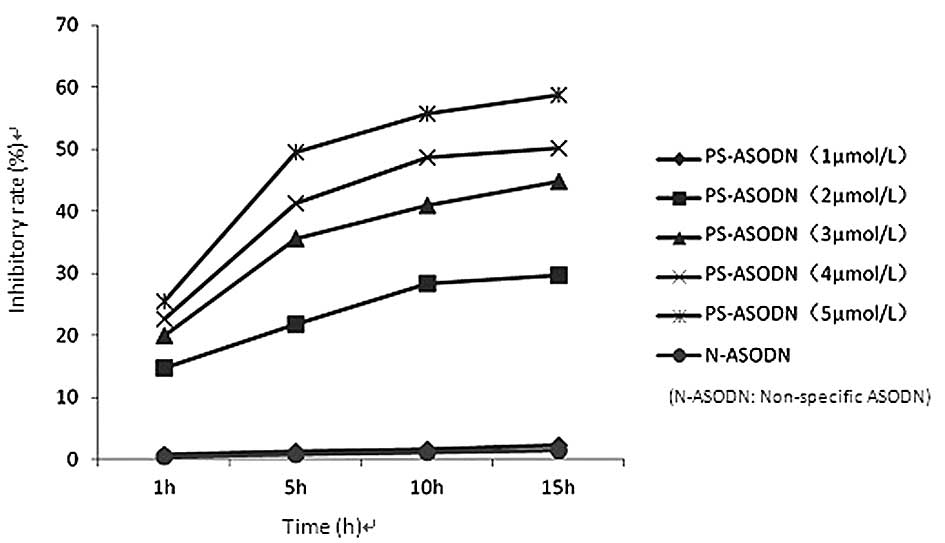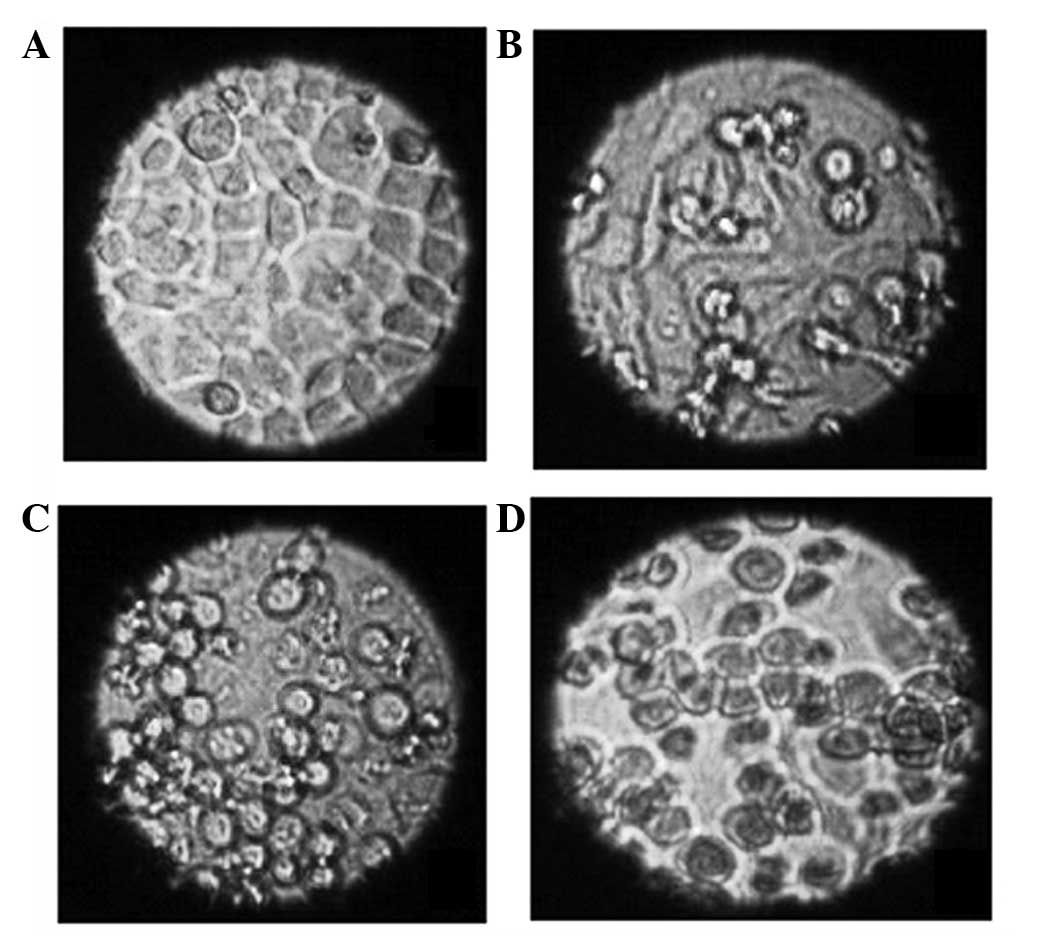Antisense oligodeoxynucleotide against human telomerase reverse transcriptase inhibits the proliferation of Eca‑109 esophageal carcinoma cells
- Authors:
- Published online on: August 11, 2014 https://doi.org/10.3892/etm.2014.1897
- Pages: 1247-1252
Metrics: Total
Views: 0 (Spandidos Publications: | PMC Statistics: )
Total PDF Downloads: 0 (Spandidos Publications: | PMC Statistics: )
Abstract
Previous studies have demonstrated that the growth of tumor cells may be inhibited by antisense oligonucleotides (ASODNs) targeted against human telomerase (hTR) or human telomerase reverse transcriptase (hTERT), resulting in antitumor activity in a wide variety of tumors. However, few studies have investigated the effect of hTERT gene‑targeted ASODNs on telomerase activity and cell proliferation in human esophageal cancer. In the present study, an MTT assay was used to determine the growth inhibition rate of Eca-109 cells treated with a hTERT‑targeted phosphorothioate‑ASODN (PS‑ASODN). An inverted microscope was used to observe the morphologic changes of the cells following treatment with 5 µM PS‑ASODN for 10 days. Telomerase activity was detected using the silver staining semi‑quantitative telomeric repeat amplification protocol (TRAP) assay. Following treatment with the PS‑ASODN (1‑5 µmol/l), the proliferation of the Eca-109 cells was inhibited. The differences in inhibition rate between the PS‑ASODN and blank control groups were statistically significant (P<0.05) when the concentration of the PS-ASODN was ≥2 µmol/l, whereas no statistically significant difference was identified between the non-specific‑ASODN and blank control groups. The inhibition rate increased gradually as the concentration of the PS‑ASODN increased and with time, suggesting that the PS‑ASODN inhibited the growth of Eca-109 cells in a concentration‑dependent, time‑dependent and sequence‑specific manner. The growth rate of the cells incubated with the PS‑ASODN was reduced compared with that of the control cells. Cells treated with the PS‑ASODN became round, suspended and reduced in size. The PS‑ASODN was also found to inhibit telomerase activity. The ability of the PS‑ASODN to inhibit the telomerase activity and cell proliferation of the Eca-109 cell line suggests that ASODNs have the potential to be novel therapeutic agents for the treatment of esophageal cancer.













